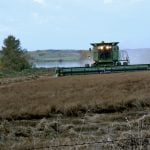There are measures you can take to protect the beneficial bug population in your field, even if you have to spray
Along with only spraying when necessary, there are several things farmers can do to protect and even encourage beneficial insects. Making the decision to spray If you are deciding whether or not to spray, and there is a population of beneficial insects in your field, you may be wondering how they will affect the economic […] Read more


